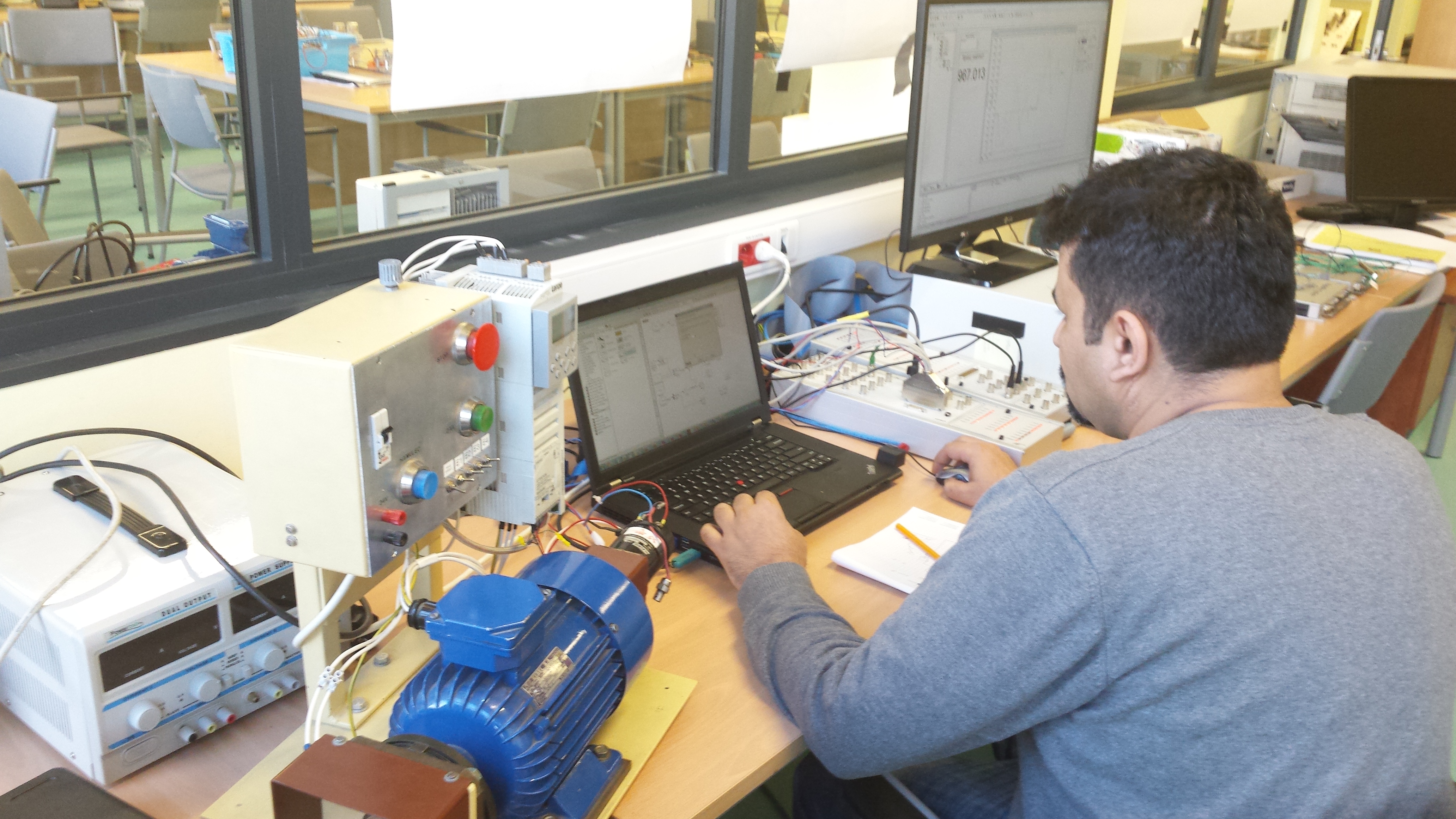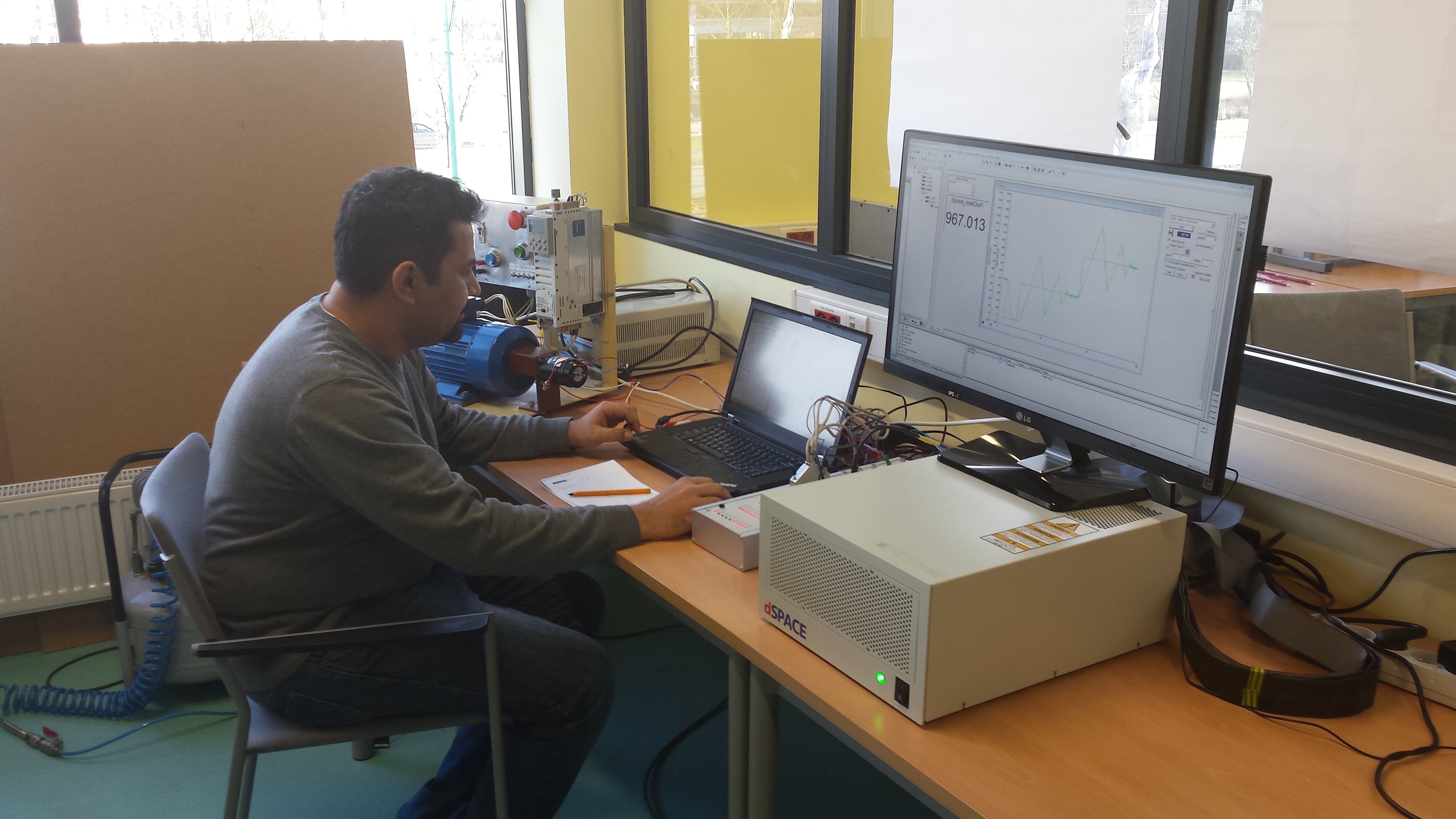Title : Visualization of a drive with asynchronous motor worked as electrical brake controlled by dSpace system with Matlab/Simulink
Project Lead : fatih korkmaz From : Cankiri Karatekin University (None)
Dates : from 2014-08-26 15:33:36 to 2015-02-05 14:06:11
Description :
Motivation and objectives :
Squirrel-cage induction motors (IM) are the workhorse of industries for variable speed applications in a wide power range that covers from fractional watt to megawatts. However, the torque and speed control of these motors is difficult because of their nonlinear and complex structure. In the past five decades, a lot of advanced control schemes for IM drive appeared. First, in the 1960s, the principle of speed control was based on an IM model considered just for steady state. Therefore, the so-called scalar control methods cannot achieve best performance during transients, which is their major drawback. Afterwards, in the 1970s, different control schemes were developed based on a dynamic model of the IM. Among these control strategies, the vector control which is included in the so-called field oriented control (FOC) methods can be mentioned. The principle of vector control is to control independently the two Park components of the motor current, responsible for producing the torque and flux respectively. In that way, the IM drive operates like a separately excited dc motor drive (where the torque and the flux are controlled by two independent orthogonal variables: the armature and field currents, respectively). Since the 1980s, many researchers have worked on improvements of the FOC and vector control which have become the industrys standard for IM drives. Moreover, these researches led to new control strategies such as direct self-control (DSC) or direct torque control (DTC). The principle of DTC is to control directly the stator flux and torque of the IM by applying the appropriate stator voltage space vector. With vector control, FOC, DSC and DTC, the major drawback of the scalar control is overcome because these control schemes are based on a model of the IM which is considered as valid for transient conditions (Santisteban & Stephan, 2001). Both DTC and DSC possess high torque dynamics compared to vector control and FOC (Bcker & Mathapati, 2007). However, these two first control techniques have the drawbacks of variable switching frequency and higher torque ripple. The use of space vector pulse-width-modulation (SV-PWM) in conjunction with DTC (called DTC-space vector modulation or DTC-SVM) has been proposed as a solution to overcome these drawbacks (Rodriguez et al., 2004), but sticking to the fundamental concept of DTC. Induction motors are widely used in industrial drives because they are rugged, reliable and economical. In recent years, electrical vehicles became very popular. And also they have high speed range, and because of this, they need urgent stop mechanism. So, system has to produce braking torque very quickly. The last example requirement refers to the future objective of the proposed project Visualization of asynchronous motor working as electrical brake controlled by dSpace system with Matlab/Simulink environment. Due to the complexity of such a drive system and its safety issues, it is recommended to build at first the simulation model of the system in order to check the correctness of e. g. control algorithm or safety procedures, then visualize the results in Virtual Reality system (like Matlab Simulink 3D Animation Toolbox, SimMechanics or EON Studio for VR applications). In the first part of the project the motor and then the theoretical description of the drive will be worked out. In the next step the theoretical analysis will be focused on development of control methods for stopping of the moving mass. Then, basing of the formulated equations the simulation model of asynchronous motor with its control drive by using dSpace and Matlab-Simulink environment will be prepared and simulation will be performed. In the next step the drive controller will be aligned and finally the whole model of a system will be built in VR environment. Such a model will be developed according to achieved earlier results and compared, through the visualization, with the reality. It is necessary to perform the research in two phases: first modelling and simulation using Matlab-Simulink and dSpace, second visualization in VR. Matlab Simulink environment is suitable for simulation and solving of control problems.
Teams :
Department of Electrical and Electronics Engineering was founded in 2011 within CKU. Department of EEE has 6 academics and plans to student acceptance for 2015.
Dates :
starting date : 18 January, 2015
ending date : 31 January, 2015
Facilities descriptions :
http://visionair-browser.g-scop.grenoble-inp.fr/visionair/Browser/Catalogs/VDS.PL.html
Recordings & Results :
The aim of the project is to adapt the known models of asynchronous motors to the project needs. Such model will allow testing control algorithms before implementation to the system and even improving its construction. Although the good dynamics is not key feature in this use of the asynchronous motor, it will be verified in Matlab Simulink environment and results will help to visualize work in the Virtual Reality. The model will be based on the CAD model and the use of Matlab SimMechanics or Matlab 3D Visualization Toolbox will enhance the development of the system. Thanks to the simulation the design process will be improved. Also asynchronous motor will be controlled by using dSpace environment.
Conclusions :
The realization of the project was divided into two main stages: Real time speed control of the asynchronous motor For this step of the project, inverter based motor driven system has been used. The system has been modelled with Matlab/Simulink. The dSpace controller board has also been integrated to the drive system. Such, the speed of the asynchronous motor has been controlled as real-time with controller board and acceleration and braking conditions have also been examined in detail. Visualization and simulation of the drive with asynchronous motor driving a mass control system To visualize the asynchronous motor which drive a mass, the DTC based asynchronous motor speed control algorithm has been designed and modelled. The DTC controller has been chosen due to the its fast dynamic response behavior and less motor parameter needs. The mass transport system that driven by the DTC controlled asynchronous motor, model has been created with Matlab/Simulink 3D Visualization toolbox.
Project Images :


Other project resources :
Korkmaz.PDF
.

VISIONAIR / Grenoble INP / 46 avenue Felix Viallet / F-38 031 Grenoble cedex 1 / FRANCE
Project funded by the European Commission under grant agreement 262044

Project funded by the European Commission under grant agreement 262044
